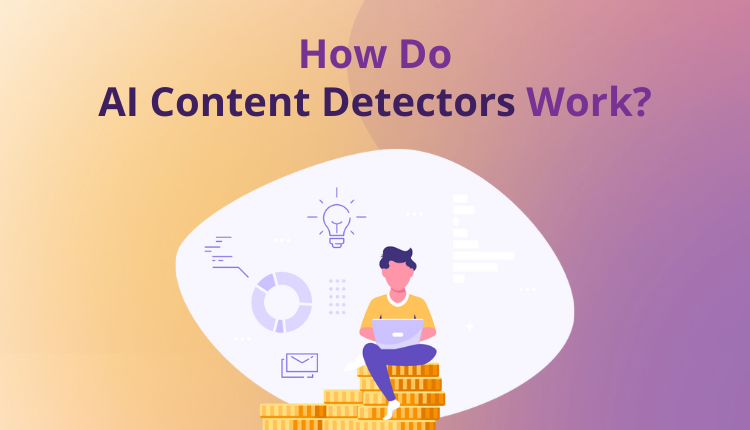Artificial Intelligence (AI) is transforming content creation in unprecedented ways, offering remarkable opportunities for improving efficiency and creativity. However, with the increasing use of generative AI tools like ChatGPT, writing bots, and text-to-image platforms, issues surrounding authenticity and ownership are gaining importance, particularly in academic, journalistic, and professional circles. Detecting whether content is AI-generated is crucial to uphold credibility, originality, academic integrity, and the trust readers place in published works.
In this blog, we’ll discuss why identifying AI-generated content is essential and explore techniques to determine its origins.
Why Detecting AI-Generated Content is Crucial
AI is a tool of immense potential, simplifying processes that might otherwise take hours or even days. However, its application comes with challenges and ethical responsibilities. Here are some key areas where distinguishing AI-generated content becomes pivotal:
-
Maintaining Academic Integrity: Universities and educators need to ensure that submitted assignments are a true reflection of a student’s understanding. The use of AI tools without proper citation undermines the essence of learning.
-
Restoring Public Trust in Media: Journalism thrives on credibility. The potential misuse of AI to generate misinformation or exaggerated content can erode trust in media platforms.
-
Ethical Practices in Research: Research publications need to clarify the contributions of AI versus human authorship. Failure to disclose AI-generated content can lead to ethical issues, especially regarding academic and medical breakthroughs.
By regularly identifying AI-written content, industries can maintain transparency and reliability.
How to Identify AI-Generated Content
Determining whether writing is AI-generated might seem challenging, but several strategies and tools can help.
1. Recognize Repetitive Patterns
AI-produced content often exhibits recurrent structures and stylistic patterns that are easy to spot with a trained eye:
- Overuse of Transitional Phrases: AI outputs frequently use connectors like “For example,” “In contrast,” or “Furthermore” excessively, which may appear unnatural in human writing.
- Lack of Emotional Nuance: AI-generated text, while grammatically accurate, often lacks the flair, emotion, or depth that humans naturally incorporate.
- Mechanical Tone: Even though advanced tools try to mimic conversational tones, the results often sound impersonal or overly neutral.
2. Run a Reverse Text Search
If you suspect a piece of writing is AI-generated, try performing a reverse search using key sentences. AI tools often reuse phrases and sentence structures, making it easier to identify passages that appear in multiple contexts.
3. Leverage AI Detection Tools
Various platforms specialize in identifying AI-generated content. These tools analyze text for structural patterns and linguistic differences to estimate the likelihood of AI involvement. Notable examples include:
- Trinka AI Content Detector: Trinka is a trusted platform that excels in detecting plagiarism and AI-generated content, particularly in professional and academic writing.
- Style Analysis Features: Certain tools examine the consistency of tone, sentence complexity, and other variables to flag AI-generated text.
4. Check the Metadata
Metadata within digital documents can be insightful. For instance, knowing a file’s creation and editing history may reveal a lack of human revisions—one of the hallmarks of AI-generated work. Although this method isn’t foolproof, it can provide supporting evidence.
Manual Indicators of AI-Generated Text
While AI detection tools can be incredibly helpful, manually evaluating content often gives extra clarity. Here are some red flags to identify AI-authored text:
Uniform Grammar and Style
AI-generated text tends to follow strict grammatical rules without any deviations or quirks—making it sound flawless but artificial. Real human authors often have unique writing styles, punctuated by their personal quirks.
Dense but Redundant Content
AI outputs frequently include sentences that look rich and engaging but repeat the same points in different ways. This density without offering new value may indicate AI authorship.
Dependency on General Facts
AI tools rely heavily on their training datasets, leading to generic or overly factual statements. Without critical thinking or deep insight, the content often feels shallow.
Protecting the Authenticity of Your Work
Ensuring that your work stands out in academic and professional settings requires proactive measures:
- Optimize Writing with Trinka AI: Trinka’s grammar checker can refine your work for clarity, tone, and overall readability while ensuring human authenticity.
- Verify Content Origin with Trinka AI Detector: Evaluate if parts of your document display common characteristics of AI-generated text.
- Cite AI Contributions When Necessary: Acknowledge the role of AI in your writing process. Transparency about tools used (such as AI assistants or grammar checkers) builds trust and credibility.
By understanding these nuances, you can ensure that your writing remains authentic, credible, and impactful.
Final Thought
As Artificial Intelligence becomes a more integral part of content creation, identifying its footprint is imperative to balance innovation with ethical practices. By employing advanced tools like Trinka AI and learning to spot common AI-generated patterns manually, you can protect the authenticity of your work while fostering a culture of transparency and accountability across industries.

